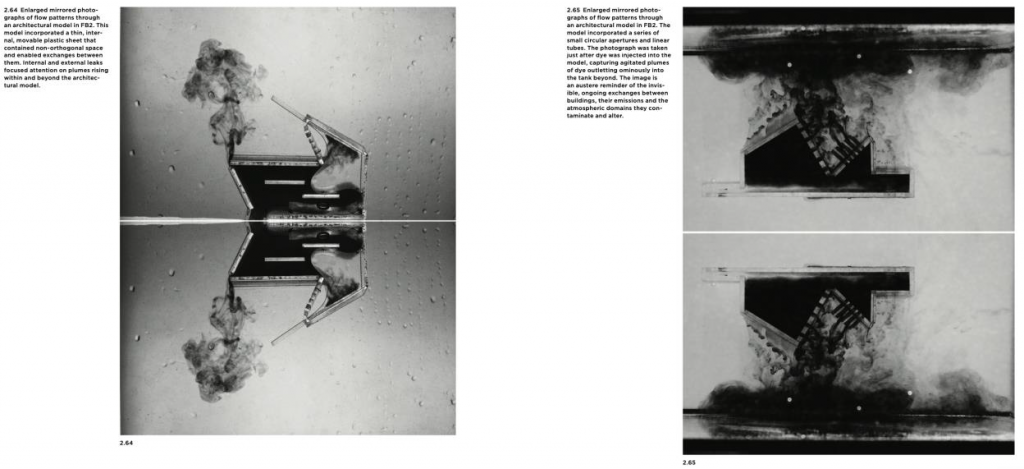MURRAY & MURRAY COMPETITION 2023
September 6 – September 13

Making sense of climate and its changes cannot be separated from how weather enwraps itself with landscapes, memory, the body, the imagination, and routine practices in particular places. Approaching climate this way demands an explicitly geographical and cultural interrogation of how people live climatically, how they become weathered.
-Mike Hulme, Weathered: Cultures of Climate
In Climates: Architecture and the Planetary Imaginary, echoing journalist and activist Naomi Klein’s words, Amale Andraos asks: “What does Climate Change (For Architecture)”?1
One of our School priorities is to orient our curriculum, practices and programs more intentionally towards climate. As we collectively take responsibility to address the climate emergency, the 2023 Murray & Murray competition likewise asks: how do we address, or apprehend, climate and the climate crisis? How do we face, and work, with this change? Rebecca Solnit reminds us what it means to embrace hope, and how different hope is from passive optimism: “Hope is not optimism. […] Hope means recognizing the uncertainty of the future and making a commitment to try to participate in shaping it. It means facing difficulties and accepting uncertainty.” 2 In this spirit, let us approach this drawing with hope.
How do we engage the changing climate with hope, using architecture’s arsenal?
1 Amale Andraos is the co-founder of the architectural firm WORKac, and former Dean of the Columbia University Graduate School of Architecture Planning and Preservation.
2 Rebecca Solnit & Thelma Young Lutunatabu, Not Too Late: Changing the Climate Story from Despair to Possibility, Chicago: Haymarket Books, 2023, p. 6.
Over the next week, you will complete a drawing that engages with climate. You are invited to think of drawing as a means to notice, record, show, tell, track, or trace. You might dive into the nature of architectural drawings as narrative, you can foreground architectural drawings’ potential to connect multiple spatial and temporal scales, you can grapple with uncertainties and conditions of flux, or work to make visible those invisible flows and forces that impact our planet.
Ultimately, you can choose to respond to this call in any way you wish. By way of example, you may consider one of the approaches below:
Engaging through the techniques and technologies of architecture, your drawings may critically revisit the make-up of our walls and building envelopes, or speculate on alternative city networks or infrastructures. (e.g. LTL biogenic sections, Yamuna River Project);
Looking at the scale of cities and territories, your drawing might foreground the interconnectedness of our cities within broader territories and map out relationships between sites of extractions and labour with those of consumptions. (e.g. Feral Atlas);
Focusing on materials or building components, you might choose to unpack buildings as “assemblage of energy”, interventions into matter, or innovative combinations of materials or even discarded objects (e.g. Kiel Moe, Amy Balkin).
Paper size: 18” x 24”
Medium: Hand-drawn or hybrid (hand-drawn and digital) drawings (i.e. drawings must have an hand-drawn component).
Exhibition: Include your name, year, and student number at the back of the paper.
Title: You might consider giving your drawing a title.
Deadline: 11:00 a.m. on Wednesday, September 13
11:00-12:30 p.m. Phase 1 Judges: All Faculty and Staff
12:30-2:00 p.m. Finalist drawings are identified and pinned up in the PIT
2:00-3:00 p.m. Phase 2 Judges: Menna Agha, Lisa Moffitt, Cassandra Moriartey, Tim Murray, Rehab Salama, Sneha Sumanth (tbc), Johan Voordouw.
3:30 p.m. Awards Announcements
4:00 p.m. Lecture and Book Launch, by Lisa Moffitt: Architecture’s Model Environments
Murray & Murray Prizes:
1st prize: $2,000
2nd prize $1,500
3rd prize $1,000
+ 3 honours Awards $500 each
The competition is a prompt for us to draw and design around climate, making drawings and works that let us identify questions and potential zones of interventions. Taking cues from Associate Professor Lisa Moffitt’s book, Architecture’s Model Environments, and the corresponding exhibition in the Lightroom Gallery and lecture on September 13, let’s find ways of mediating our relationships to the invisible and immeasurable aspects of the environment. Working through design, drawings, and constructions can help us sense, acknowledge, and ultimately respond to the uncertainties and urgencies of our times.
The Murray and Murray prize has been awarded at the ASAU since 2003. According to the original terms of the prize: “The competition challenges students to develop and present an architectural idea through hand-drawn drawing and to demonstrate an exceptional ability in using scaled and rendered drawings that include the conventions of plan, section and elevation.”